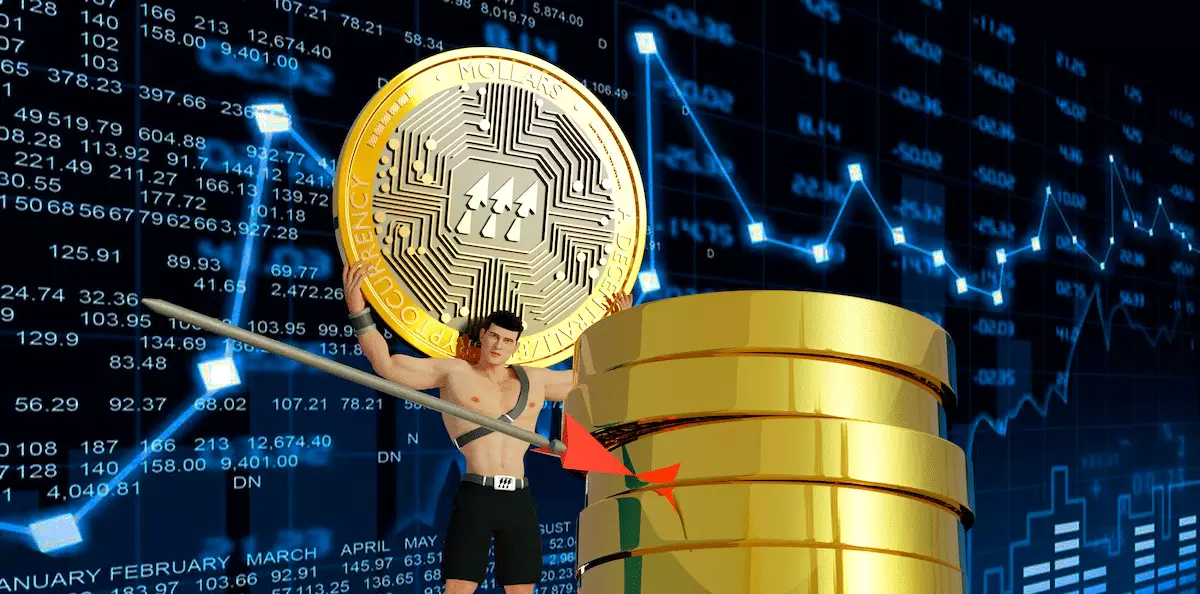The cryptocurrency market is currently experiencing a groundbreaking shift with the emergence of Mollars ($MOLLARS), a potential alternative to Bitcoin ($BTC). As Mollars enters its third round of the token presale stage, investors are flocking to this new digital currency at an unprecedented pace, with nearly 100,000 tokens being sold daily. But what sets Mollars apart from Bitcoin, and could it potentially yield massive profits for investors?
A Store-of-Value Token
One of the key advantages of Mollars over Bitcoin is its status as a store-of-value token. In an era plagued by inflationary crises, Mollars offers traders from all corners of the globe an opportunity to safeguard their wealth and save money. With a limited total supply of only 10 million tokens to be minted, Mollars has the potential to reach a value of $100, especially considering the current rate of demand. In fact, if demand continues to surge through 2024, this ‘bitcoin-like’ token built on the Ethereum blockchain could potentially surpass all expectations and reach even higher values.
The Demand Factor
Demand plays a crucial role in determining the price of cryptocurrencies with scarce supply, much like Bitcoin. Since its token presale stage when it had a value of less than 1 cent, Bitcoin has soared to over $42,000, reflecting the increase in demand over the years. However, this surge in price is not expected to stop anytime soon. The United States Securities and Exchange Commission (SEC) recently updated regulations, allowing major investment agencies such as Merril Lynch, JP Morgan Chanse, Morgan Stanley, and Charles Schwab to invest in Bitcoin. This regulatory change could lead to a predicted rise of Bitcoin’s value to an astonishing $1.5 million by 2030 if demand explodes due to the spot ETF approval.
The Problem with Bitcoin’s Transaction Fees
Despite its success, Bitcoin faces a significant challenge in the form of its blockchain transaction fees. In recent times, these fees have become exorbitant, creating obstacles for crypto traders. For instance, a single swap on the BTC blockchain cost a crypto whale over $123,000, which highlights the costliness associated with Bitcoin transactions. Given this situation, it is only logical to explore alternative options that offer store-of-value benefits. Enter Mollars, which presents itself as a more efficient blockchain solution on the Ethereum network. Mollars is expected to facilitate faster and cheaper buy and sell trades, making it an attractive choice for investors seeking a Bitcoin alternative.
Investors are not blind to the advantages presented by Mollars. Major investors have been purchasing significant amounts of Mollars daily, aiming to secure the lowest rate possible during the presale stage of this promising store-of-value token. Currently priced at $0.45 per token, Mollars’ price is expected to increase to $0.62 once it is launched on public crypto exchanges in May. With the ICO already surging towards 800,000 tokens sold or 20% of the total ICO supply, it is evident that Mollars has gained substantial support.
The Potential for Massive Yields
Experts and analysts have been drawn to the overwhelming support for Mollars, with many predicting impressive returns for early investors. Decentralized Financial (DeFi) gurus from various crypto platforms and metropolitan media sources suggest that Mollars could yield massive short-term returns of up to +2,100% and long-term returns of up to +9,500,000%. Although not yet reaching the astronomical heights of Bitcoin’s ICO investors’ returns of +20,000,000%, Mollars has the potential to surpass these figures if demand remains consistent.
While Mollars presents a strong case as a potential store-of-value token, other tokens on the market offer different opportunities. Shiba Inu (SHIB) and Bonk Inu (BONK) are memecoins and do not possess the same value proposition as Bitcoin and Mollars. Additionally, their token supplies far exceed that of Bitcoin and Mollars, rendering them less likely to reach the $100 milestone. For example, Shiba Inu has a total supply of 4 quadrillion coins, making it challenging to generate high demand and subsequent high value.
When considering a store-of-value token with long-term utility against global inflation, the total token supply becomes a crucial factor. Mollars, with its limited supply of 10 million tokens, and Bitcoin, with its 21 million coins, differentiate themselves from memecoins like Shiba Inu and Bonk Inu. The scarcity of these tokens contributes to their higher value and potential for significant returns. It is essential to carefully consider the underlying infrastructure and token supply when investing in cryptocurrencies.
The emergence of Mollars presents an intriguing alternative to Bitcoin, offering investors a store-of-value token with the potential for substantial returns. With its growing demand, faster transaction speeds, and lower fees, Mollars has captured the attention of investors worldwide. However, it is crucial to evaluate the token supply and overall market dynamics when considering investments in the cryptocurrency market. As Mollars and other digital currencies continue to evolve, the landscape of store-of-value cryptos may experience a significant transformation in the years to come.


Leave a Reply